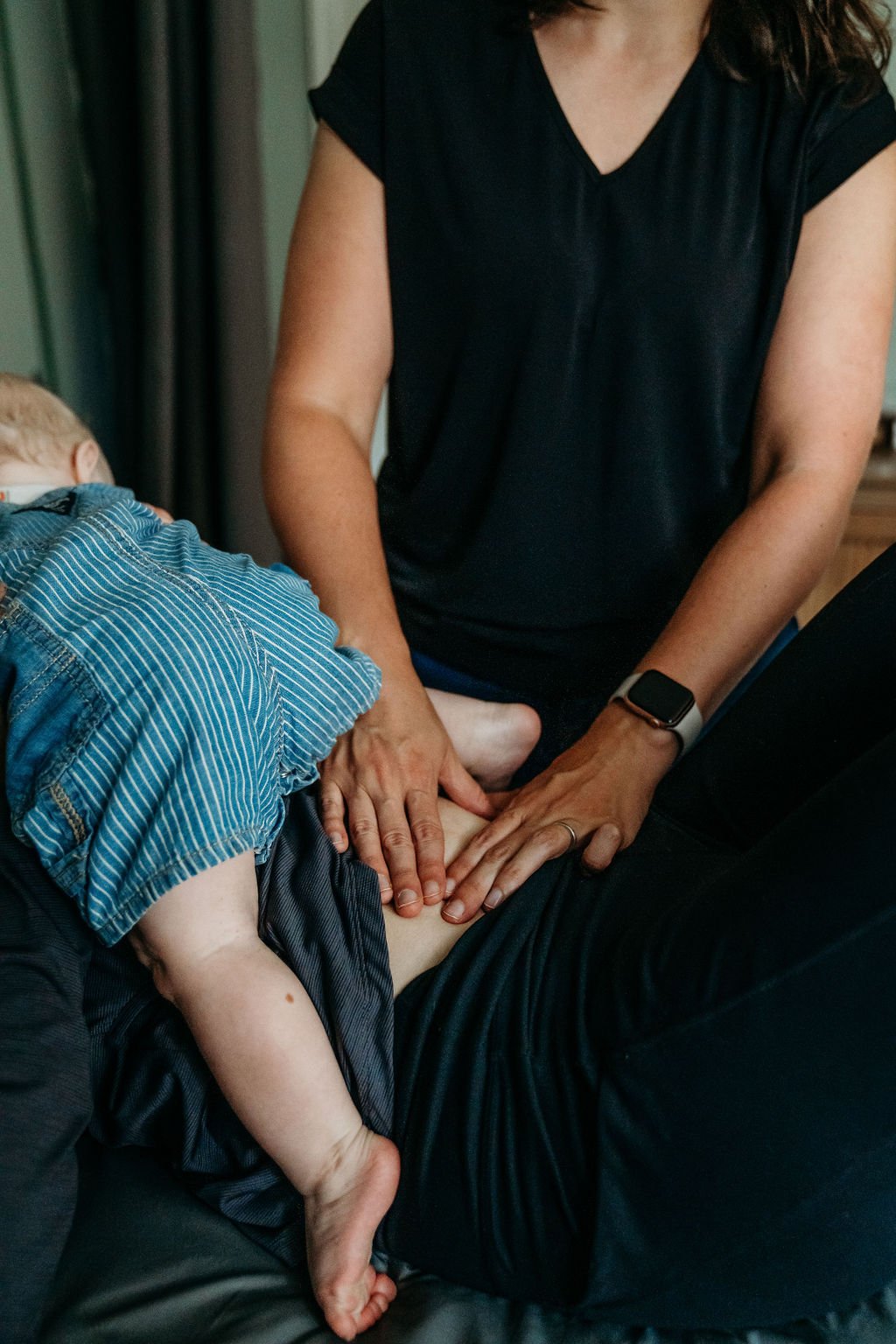Overcoming the Fear of Exercise After a C-Section: Finding Strength in Movement
Introduction: When Fear Holds You Back
After a C-section, the idea of returning to exercise can feel overwhelming. You might worry about reopening your incision, worsening pain, or doing something “wrong” that could slow your recovery. These fears are completely valid—but avoiding movement altogether can prolong stiffness, discomfort, and feelings of disconnection from your body.
In Your Guide to Post-C-Section Recovery, we explored the physical and emotional challenges of healing. One common barrier is the fear of exercise, which often stems from a lack of confidence in how to move safely. Let’s address those concerns, debunk some myths, and discuss how gentle, guided movement can actually accelerate your recovery and restore your confidence.
Why the Fear of Exercise Is Common Post-C-Section
The fear of exercise after a C-section often arises from:
Uncertainty About Safety: It’s hard to know what movements are okay and which should be avoided during the early stages of healing.
Physical Discomfort: Pain or sensitivity around the incision site can make even small movements feel intimidating.
Misinformation: Myths about postpartum exercise, like needing to wait months before starting any activity, can add to confusion and fear.
Past Trauma: If your delivery was particularly challenging, it’s natural to feel hesitant about engaging your body in new ways.
The Benefits of Movement in Post-C-Section Recovery
Gentle, appropriate exercise can actually support your healing journey. Here’s how:
Improves Circulation: Movement boosts blood flow, which aids in tissue repair and reduces swelling.
Strengthens Core and Pelvic Floor: Gradual reactivation of these muscles helps improve stability and reduces discomfort.
Eases Stiffness: Gentle stretches and mobility exercises can prevent long-term tightness, especially around the incision area.
Boosts Confidence: Positive experiences with safe movement can help you reconnect with your body and overcome fear.
Steps to Safely Return to Exercise
Start Small and Gentle
Begin with breathing exercises and light movements, like pelvic tilts or seated stretches. These are low-impact and unlikely to cause strain.
Listen to Your Body
Pay attention to how you feel during and after exercise. Stop if you experience sharp pain or discomfort, and consult a professional if needed.
Incorporate Scar Mobilization
Once your incision is fully healed, gentle scar massage can improve mobility and reduce sensitivity. (Refer back to our guide on scar care for tips.)
Focus on Core and Pelvic Floor Activation
Engage in exercises that rebuild core strength and pelvic floor stability, such as diaphragmatic breathing, bridges, or modified planks.
Work with a Specialist
A pelvic floor therapist or postpartum fitness coach can guide you through safe exercises tailored to your recovery needs.
Avoid High-Impact Activities Early On
Stay away from running, jumping, or heavy lifting until cleared by your healthcare provider or therapist.
Debunking Common Postpartum Exercise Myths
Myth 1: “You have to wait six weeks before doing anything.”
Fact: While certain activities should be avoided initially, gentle movements like walking or deep breathing can often start the day after delivery. The activities that we should avoid are bending, lifting and twisting.
Myth 2: “Exercise will damage your incision.”
Fact: Safe, low-impact movements won’t harm your incision and can actually support healing by improving circulation.
Myth 3: “If it doesn’t hurt, you’re not working hard enough.”
Fact: Postpartum recovery is not the time for “no pain, no gain.” Pain is a signal to modify or stop an activity. Only increase by 5-10 minutes each week.
My Personal Perspective
In my first recovery experience I so desperately wanted my body to be mine again that I started high intensity exercise early but then paid for it later which resulted in worsening symptoms. On my second time around I wanted to be kind to myself and listen to my body. To be honest there was some fear of making things worse and putting trust in my body was hard. I found that having a plan really helped. I paid for the “Get Mom Strong” postpartum program, which I recommend to many of my clients, and started to progress my movements in a healthy and beneficial way. Over time I got stronger, over time I started to trust my body and over time my fear of movement past.
Call to Action: Take the First Step Toward Confident Movement
Fear is a natural part of recovery, but it doesn’t have to hold you back. With the right guidance and a gentle approach, you can rebuild your strength and trust in your body.
Schedule a Consultation to create a personalized postpartum exercise plan.
Looking Ahead
Exercise after a C-section doesn’t have to be scary—it can be empowering. By starting small and seeking support, you can transform fear into confidence and rediscover the joy of movement. For more tips on postpartum healing, revisit Your Guide to Post-C-Section Recovery and check out our upcoming posts on emotional recovery, fatigue management, and body image concerns.
Your recovery is your own unique journey. Take it one step, one breath, and one movement at a time.
Ready to rebuild your strength? Contact us today to start moving confidently toward recovery.

